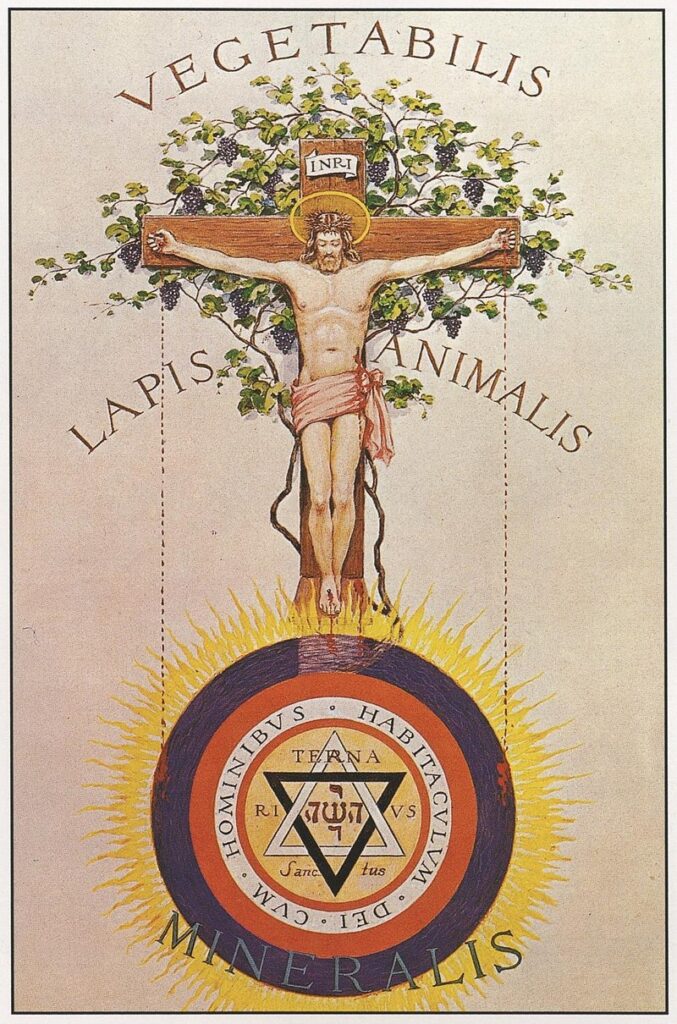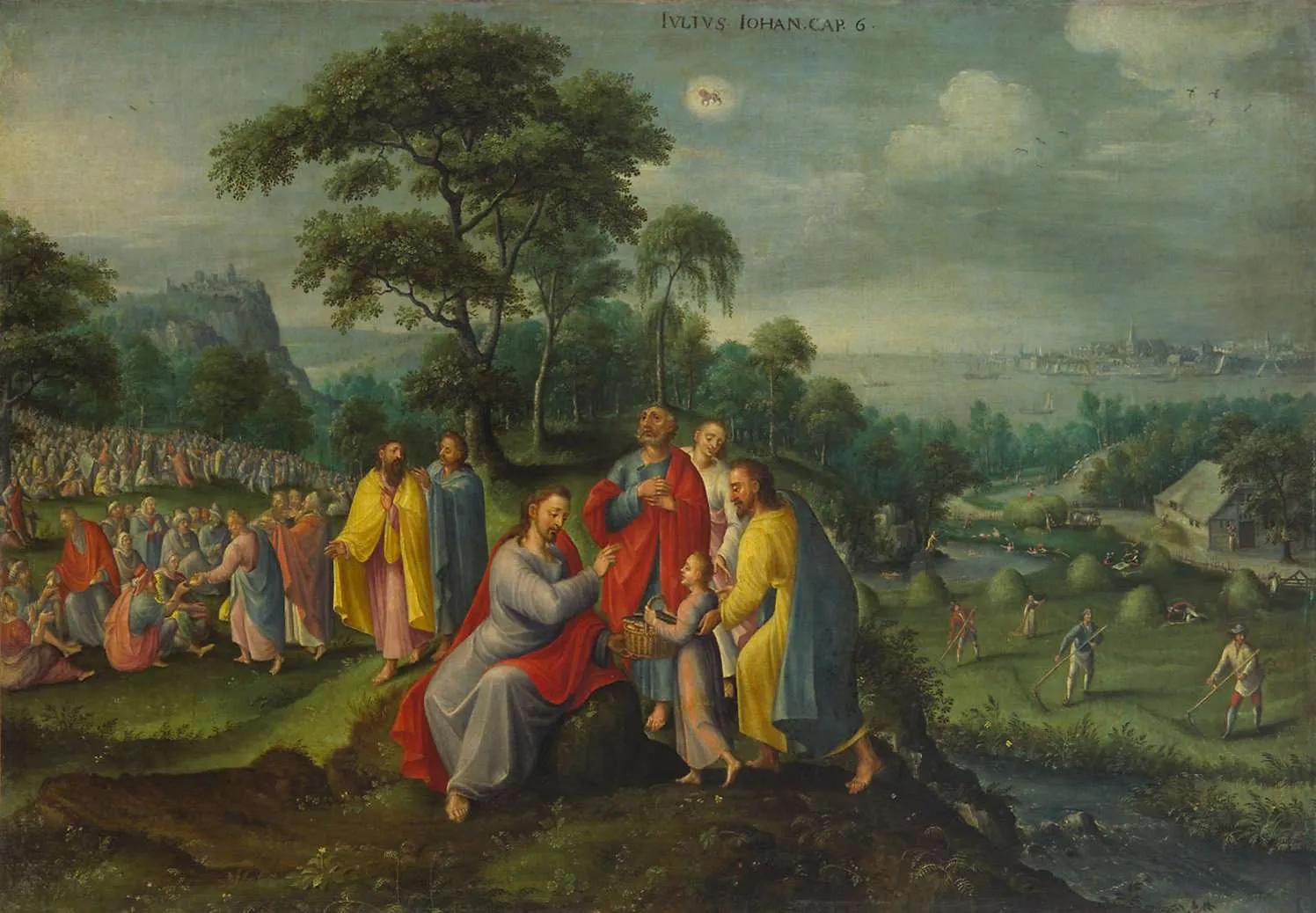In John 6, Christ acts within the second He of the Tetragrammaton: the plane of Assiah, the realm of form and obedient matter. It is the moment when the Logos touches the Earth and reveals that the visible world is not external to God, but His condensed cipher.
The “multiplication” is a theurgical demonstration: Christ impresses number and proportion upon the chaos of necessity. The bread, symbol of the element Earth, becomes the body of the Word. Christ does not create ex nihilo (the act proper to the Father, Yod), nor merely name or illuminate (the act of the Son, Vav), but orders what already exists: He redistributes, rearticulates, and breathes rhythm into the matter of the world. It is the Spirit reorganising substance according to the cadence of the Word.
Hence the miracle is metron in motion. From the ancient Greek μέτρον (metron), meaning measure, limit, proportion. The same root is found in meter, geometry (geo-metron, the measure of the earth) and mathematics (ta mathēmata, “the things that are learnt,” structured through measure).
In Greek philosophy, metron the principle of right proportion – the boundary where excess becomes harmony. In the Johannine sense, Christ embodies metron as divine equilibrium: number transfigured into grace. It is the Spirit measuring the world and restoring it to its just proportion. “Gather up the fragments that remain, that nothing be lost” (John 6:12) is precisely the formula of cosmic reintegration: the excess returns to the measure, the dispersed returns to the One.
What the Evangelists call a miracle is, in Hermetic language, the re-ordering of the material plane according to the Divine number. The bread is coagulated speech and the fish is the living soul – the symbol of Christ hidden within the waters. By multiplying them, the Logos does not increase quantity but restores correspondence between Heaven and Earth, showing that even substance obeys when named by the just Word.

In John 6, the presence of the five loaves must be noted. The number five is the number of man: five fingers, five senses, five wounds of Christ. But also the number of the Pentagrammaton, the Name of Jesus (YHShVH), in which the letter Shin (the fire of the Spirit) is inserted into the Tetragram. It is the sign of the Incarnation of the Word, the divine Logos penetrating human form.
From the Pythagorean standpoint, five arises from the union of the odd and the even, of two and three, i.e., of soul and body, receptivity and activity. It represents the dynamic balance of the microcosm, man as the mediator between Heaven (triangle) and Earth (square).
The miracle of the five loaves among five thousand men is the multiplication of man himself, or rather, his reintegration through the Word. Christ acts as the fifth element, the aether that gathers the four elements of Creation and makes of bread (Earth) a vehicle of Spirit.
The reference to five thousand carries both Pythagorean and Kabbalistic resonance: 5 × 1000 suggests man elevated to fullness. In Hebrew, eleph means “thousand,” but also “strength,” “ox,” and bears the value of Aleph, the first letter. Therefore five thousand is man (5) traversed by Aleph (1000), the human re-entered into the divine breath.
Five is also the half of the Tetraktys (1+2+3+4=10), the midpoint between unity and totality. In this miracle, Yeshua revealas that the cosmos is an organism of living proportion.
Christ also unveils that hunger is illusory from the standpoint of the Absolute. There is plenitude; there has always been. The five loaves contain the nourishment of five thousand because they already belong to the regime of the Logos. The multitude does not perceive this. Christ unveils sufficiency.
But this unveiling can occur only through a thaumaturgic act. It is not enough to say, “Behold, there is bread enough.” The matter itself must be reorganised so that plenitude becomes perceptible to fallen senses. Christ repairs the interface between Metron (eternal, inviolable) and human perception (temporal, distorted).
Κύριε ελέησον
